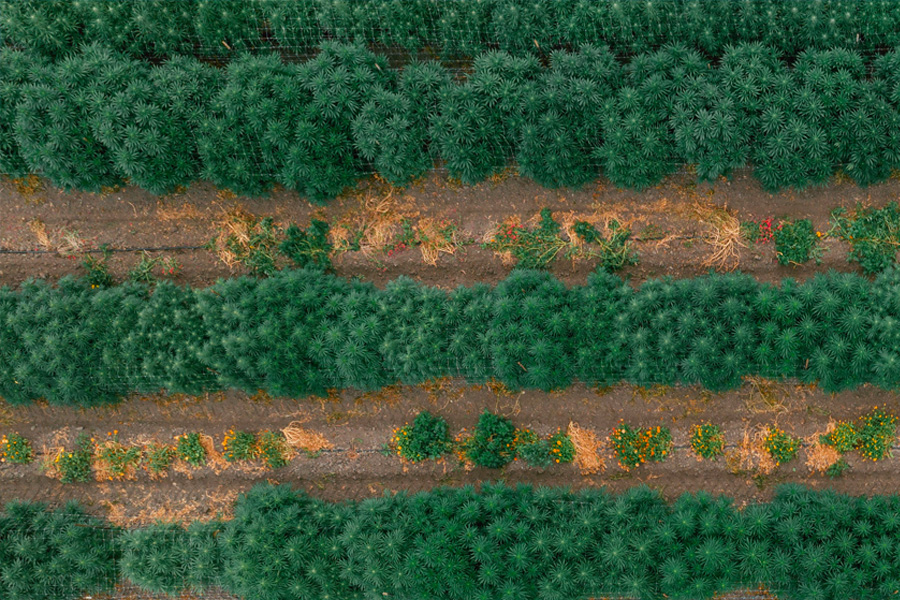Determining the appropriate plant spacing for your field is a crucial consideration that impacts crop health, efficiency of cultural practices, and overall yield. In this blog post, we will explore three distinct plant spacing metrics for cannabis – bed spacing, row spacing, and in-row spacing – and provide insights into ideal plant densities for different crop types.
Bed Spacing, Row Spacing, and In-Row Spacing
- Bed Spacing: Refers to the distance between beds, measured from center to center. In a tractor system, this is measured as the distance between the centers of the two tires.
- Row Spacing: Represents the distance between rows on the bed. When there is only one row, it is termed as a single row.
- In-Row Spacing: Represents the distance between plants within the same row.
Importance of Adequate Spacing
Providing sufficient plant spacing allows for easy access during cultural activities like weeding, spraying, and harvesting. It is crucial to strike a balance between spacing requirements and regulations, climate considerations, and desired yields.
Autoflowers Spacing
A common request is how to calculate cannabis plant spacing. Well, in a 60″ tractor base system, we recommend spacing auto flower plants one foot apart in the row, with two rows that are 30″ apart underneath the tractor. This arrangement results in 17,424 plants per acre. This spacing allows for optimal sunlight penetration and eliminates the need for trellising due to the plants’ natural support. The recommended range for autoflower plant density is typically between 8,000 and 21,000 plants per acre.
Semi-Full Term + Full Term Spacing
For semi-full term and full-term crops grown from seed, we suggest providing more space compared to autoflowers. In the same 60″ tractor base system, planting one row at 3 feet apart results in 2,904 plants per acre, while spacing of 4 feet apart amounts to 2,178 plants per acre. Some growers may opt for wider spacing, such as 6 feet in a row or two rows at increased densities for later plantings.
For later plantings or limited plantable ground, higher densities may be appropriate, but it’s generally not recommended to exceed two rows planted at 2 feet, resulting in 8,747 plants per acre.
Considerations for Clones
When planting clones, it’s important to note that they are typically less vigorous than seeds. Consequently, many growers opt for denser plantings of clones, taking the planting date into account. Plant densities for clones can range from 2,500 to 4,000 plants per acre. In late-season successions, growers have even experimented with densities of up to 10,000 plants per acre.
Determining the optimal plant spacing for your field is a critical decision that influences crop growth, access for cultural practices, and overall productivity. By considering factors such as crop type, climate conditions, equipment capabilities, and regulatory requirements, farmers can implement an effective cannabis plant spacing strategy and maximize their yields.
